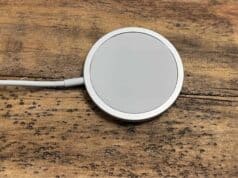As if explaining Lean to people at hospitals doesn't stretch my brain enough, I sometimes find it's a fun (or at least helpful) challenge to explain what it is I do to folks who've had no exposure to it (like friends or family).
I'm on the road for work and was at the hotel bar with a few co-workers. The bartender asked what we do and I got the job of explaining. I told her we apply methods from Toyota, called “Lean,” for improving quality and efficiency in hospitals. She asked some questions and I tried relating it to her job.
I put out the idea that her bar is probably pretty well arranged for her efficiency — the soda and mixers tap is right in front of the bar, as are glasses and ice. I asked her how it would be if the ice were in the far corner of the bar, requiring lots of walking back and forth all day. She said that would be horrible. Well, that's what work is often like for nurses, running back and forth all day from patient rooms to central supply areas. Ah! An eye-opener for her.
To illustrate quality, I asked her what would happen if she accidentally poured a very expensive scotch instead of the cheaper one. “Well, the manager would be pretty angry.” Some bars have a system (this one doesn't) that “error proofs” the pour size (with automation) to make sure a “double” isn't poured when the customer is charged for a single shot. The bar could have systems that help detect or prevent the wrong bottle from being taken (bar code scanning or other methods). That's a similar challenge to pharmacies and nursing units not taking or dispensing the wrong medication or dose. “Except that mistake can kill people at the hospital,” the bartender noted. Exactly.
What do you think of those examples? Do you have “everyday explanations” that you use to explain Lean? I wasn't “dumbing it down,” just trying to relate it to her everyday job… I think that's a good skill and practice.
Please scroll down (or click) to post a comment. Connect with me on LinkedIn.
Let’s build a culture of continuous improvement and psychological safety—together. If you're a leader aiming for lasting change (not just more projects), I help organizations:
- Engage people at all levels in sustainable improvement
- Shift from fear of mistakes to learning from them
- Apply Lean thinking in practical, people-centered ways
Interested in coaching or a keynote talk? Let’s talk.
Join me for a Lean Healthcare Accelerator Trip to Japan! Learn More










I like the example of the gadget that only allows a ‘single’ to be poured from the bottle as an example of a Poke Yoke.
I’ve got this Japanese drinks bottle that I carry around to show people the concepts of Poke Yokes and building quality in.
The bottle has a marble trapped in a cavity in the top third of the bottle so that if you tip the bottle over the fluid pushes the marble into the mouth of the bottle and the fluid doesn’t leak out. So how do you pour the drink you say? Well, there are 2 protrusions on the inside of the cavity that if you tip the bottle so that they are at the bottom they catch the marble and it doesn’t block the mouth and stop the fluid flow.
I think it’s genius. My clients think I’m nuts. : )
I went to the sub shop at lunch the other day and I accidently got oregano on my sub instead of pepper. Not a big deal, but the lady explain that *somebody* put the canisters in the wrong slots. It’s not a great error proof, and didn’t work this time, but its low tech, easy to implement, and a great example of “everyday lean.”
The restaurant was too busy for me to explain how her job and my job were the same. ;)
Andy – interesting story. You’re right, standardized work approaches to error proofing aren’t really the most effective. If the sub shop was a lean culture, how would they have responded to the defect? Instead of just putting the containers in the right locations, they could have asked why that occurred, immediately “swarming” the problem to discuss how to prevent it from occurring again, right?
Mark –
I think you slightly missed the point. Lean is about teaching the bartender to recognize and solve her own problems. Getting her to engage PDCA will lead to a lifetime of improvements, whereas a consultant putting the soda mixers closer to her may get changed back with the night shift supervisor.
Best regards,
Matt
Matt – you are absolutely right!!
I cut short my re-telling of the story here on the blog.
I did explain to the bartender that Lean is about teaching people to analyze their own work and to come up with their own ideas… I was remiss in telling that part of the story here.
It’s not about the wise-guy consultant having all the answers (I certainly tell my clients that!!).
Hi, I use a good example of Waste with teams so they don’t think waste removal is about removing them.
I worked on a project (in a Telco) and we measured the “average” Move Add and Change (MAC) for a Managed Customer to take 79 hours. Of that 79 hours only 1 hour was touch time.
So, when we are removing waste we’re not talking about making people work harder, or faster just removing the dumb things in the process that stops people doing a good job, like jobs waiting in queues, jobs waiting in the wrong queue, going back for more information etc etc.
Kevin.
I normally find that after explaining what I do to people they tell me it’s all common sense and organization. In most cases I would have to agree.
Paddle –
I like that example. One of my favorites is similar. In order to give a customer a delivery date, it took 76 hours, of which only 27 minutes was “touch” time between sales and scheduling. We were able to develop a system within our own current processes that reduced that time to near instantaneous (dependent on IT system speed when entering a part number) on the majority of product in our first work cell. That change has been carried over to 2 other product lines now.
Our planners still have to plan 50-60% of all work in the plant before sales can quote a delivery date (we are a mix of standard and custom machining). However, we are steadily reducing that amount with the creation of part families and Lean processes. It is far better than the 100% planning we did just 12 months ago.
I was sitting at a local bar recently and I overheard the bartender asking his manager if it would be OK to move some of the beer bottles around for easier access. He wanted to move the higher volume beers closer to the end of the bar where the wait staff picks up their drinks.
The manager shrugged his soulders and sort of agreed, but quickly changed the subject to something else. Later I had a chance to talk to the manager, and berated him for not taking his employee’s suggestions more seriously. He later got with the bartender and worked out a plan to move the beer and “standardize” the system. There was a lot more motion waste that could be eliminated…I hope the manager got the message and opened up his mind.
Not sure of the point here…but another example that lean works everywhere.
Comments are closed.